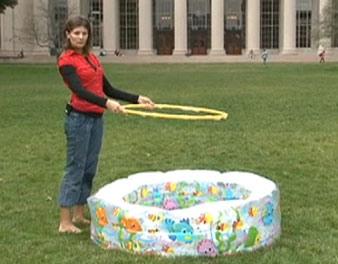This lesson has been divided into two parts.
Click the Language drop down above to select a different part of the lesson.
As magic and ephemeral as they may seem, soap bubbles are a magnificent example of precise mathematics, physics and chemistry at work. Part One of this video lesson will explore the science that explains soap bubbles, as well as the application of this knowledge to other areas, such as architecture and biology. We first introduce the concept of surface tension. We then derive how minimal area surfaces correspond to minimal potential energy. This gives the possibility to discuss the meaning of minimum potential energy in physics. With this knowledge, we can understand some properties of the geometry of soap bubbles and verify our findings with our own hands. Prerequisites for this lesson include a familiarity with the concepts of force, potential energy and mechanical work, and the lesson can be completed in a 50-60-minute class period. The following materials are needed: deformable metal wire (e.g. a tin wire); water; bowls; soap solutions with different concentrations of soap; and glycerin. Most of the class activities between the breaks involve dipping different frames in a soap solution and getting different shapes. In this way, the students are guided through the concept of surface tension and area minimization. In Part Two of this video lesson, students will learn where the colors of soap bubbles come from and also learn what soap bubbles and telescopes have in common. The students will first make a connection between light and waves and will then go on to explore various characteristics of waves through a series of classroom activities. Materials needed for Part Two include: a few ropes or latex tubes or slinkies, each a few meters long; a large transparent disk/pan with water; flashlight; transparent jar full of water; soap, water, glycerin or corn syrup or sugar; black coffee mugs or make frames with black cardboard. The second part of the lesson can be completed in one classroom period.

